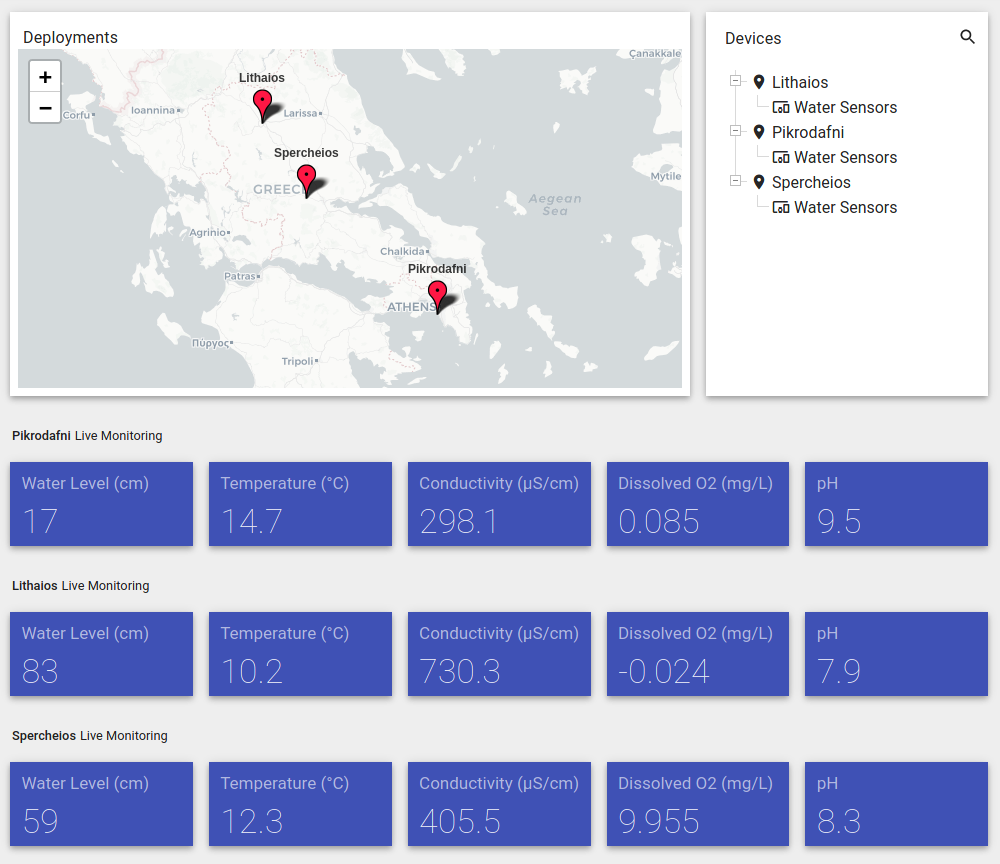Open ELIoT (EnvironmentaL IoT) monitoring is an integrated and affordable Internet of Things solution for remote, real-time monitoring and analysis of surface water environmental parameters. It provides timely and clear information and warnings for phenomena that require immediate response, such as floods, droughts and water pollution, with the ultimate goal of timely mitigation measures. It is a value added service and an essential, valuable decision support tool that helps protect public health and save public money.
Damages from natural and man-made disasters such as floods, droughts and water pollution have increased significantly in recent years due to climate change, inadequate flood planning and irrational water management. According to UNISDR (2015) about 90% of all natural disasters are water-related. Over the period 1995–2015, floods accounted for 43% of all documented natural disasters, affecting 2.3 billion people, killing 157,000 and causing US$662 billion in damage. At the European level, the impact of floods and thunderstorms in the years 1998-2009, through 213 recorded events, resulted in 1126 human lives and € 96 billion in financial losses. At the same time, having access to affordable, safe drinking water is a big challenge, as drinking water becomes ever more sparse. In terms of pollution, international research has shown that about 12.6 million people die each year from the effects of water, soil and air pollution. These adverse effects could be mitigated significantly if timely and reliable information was available through monitoring of environmental parameters in the water bodies.
In Greece, public and private bodies regularly monitor critical environmental parameters via on-site sampling in local and / or national networks (eg Surface Water Monitoring Network in accordance with the Water Framework Directive, 2000/60 / EU, http://wfdver.ypeka.gr/en/home-en/). However, this practice has significant limitations and weaknesses, which are related to the following:
- the cost of the process is very high, as it requires the in-situ transfer of specialized personnel, the use of specialized equipment to do the sampling and the further analysis of the samples in laboratories,
- the time to obtain the results is very long,
- many of the data are of practical value at the time they are observed,
- data density is very sparse. At national level often it does not exceed 3 times yearly.

Aiming for a resilient, interoperable, flexible solution that is anti-vendor-lock-in by design, we are implementing an open architecture, open hardware, open software and open data approach. As the real value resides in the insights which are extracted by the data, we are making it easy for any stakeholder to use the solution and produce high quality environmental data, available to all. The hardware is designed to be low cost, energy autonomous, portable, easily install-able and with low maintenance requirements. Data is collected, stored, processed, analyzed and visualized in an online IoT platform, from where it can be downloaded or acquired via API for further processing.
Concerning design, the solution spans the IoT value chain from the sensors level (data generation) to the online data processing and analysis platform, which creates added value to end users.

Open ELIoT already provides live data for three rivers in Greece. This can be publicly accessed via the following link:
Last, but not least, we aspire to creating a community and ecosystem that will leverage and extend the use of the solution in areas that need it and ensure the sustainability of the platform over time.

